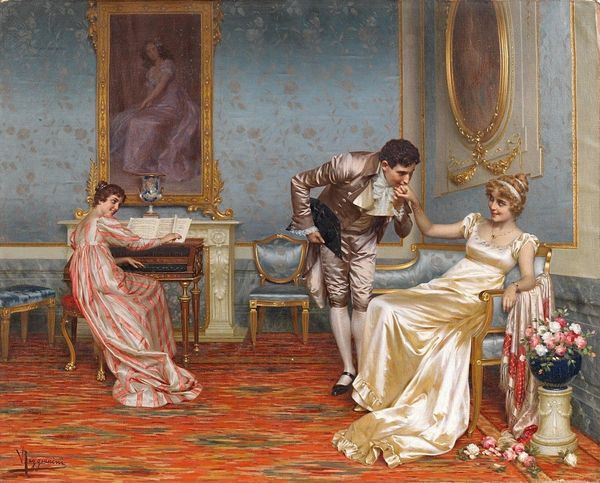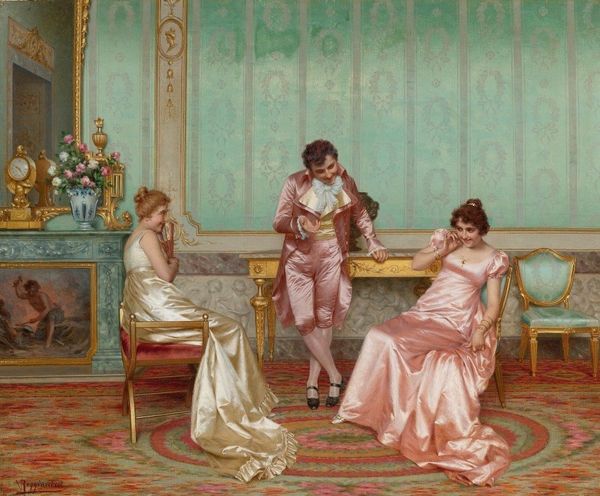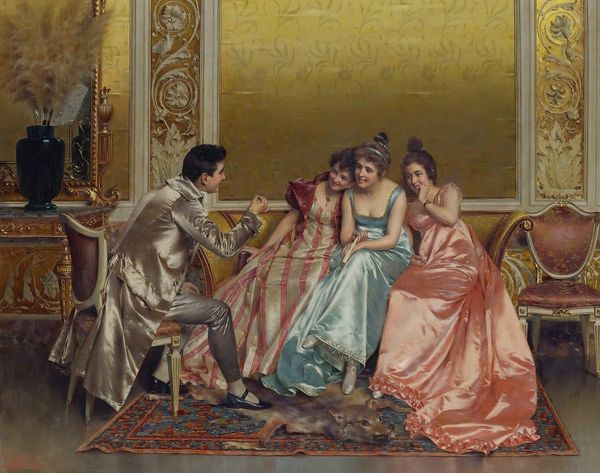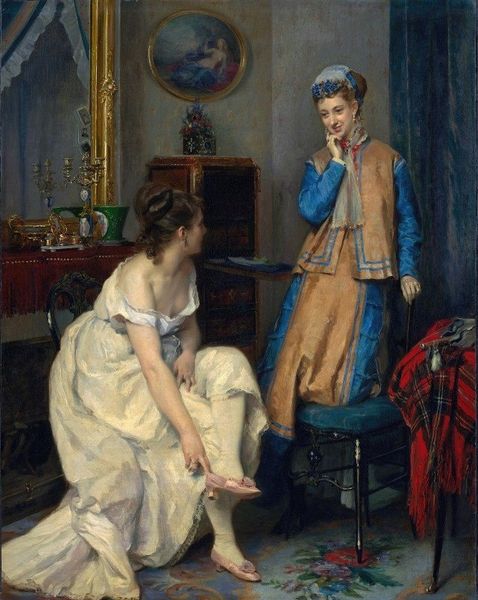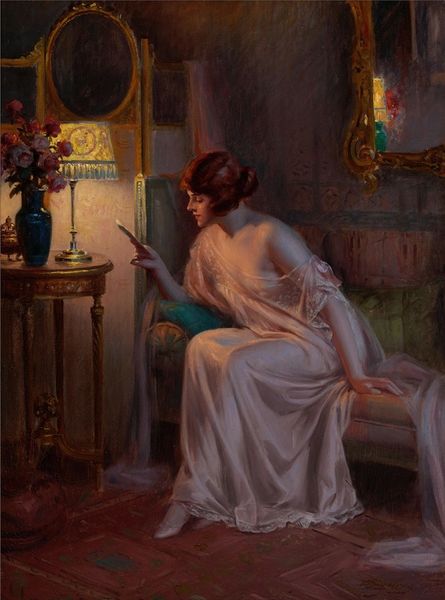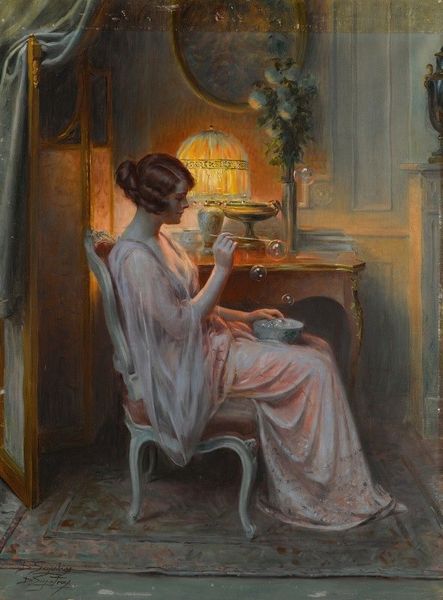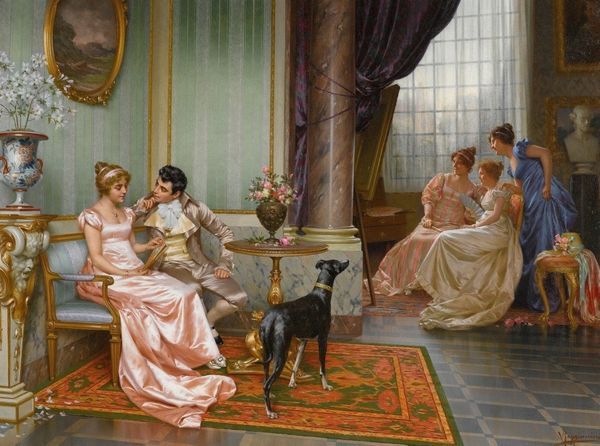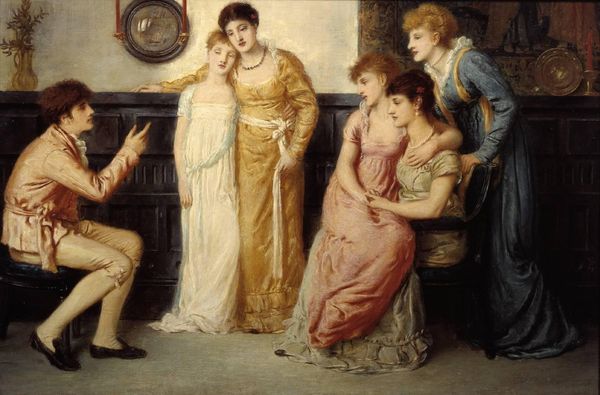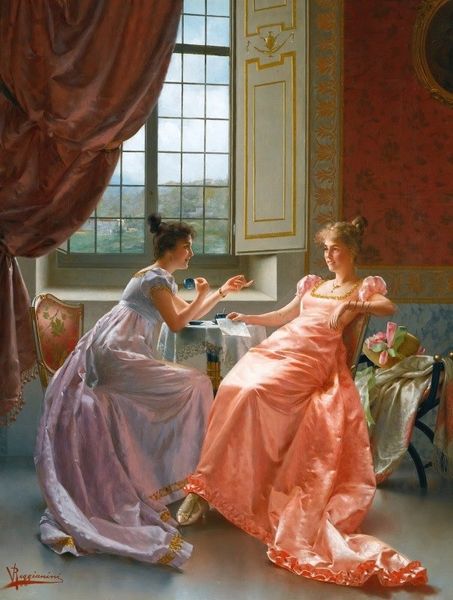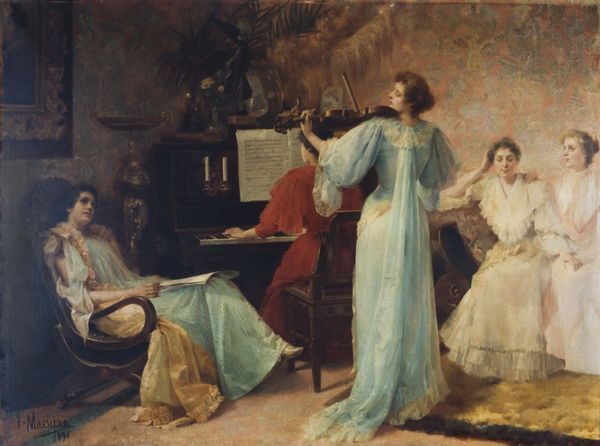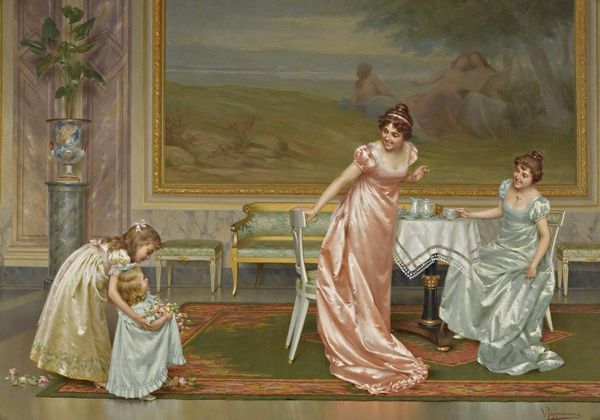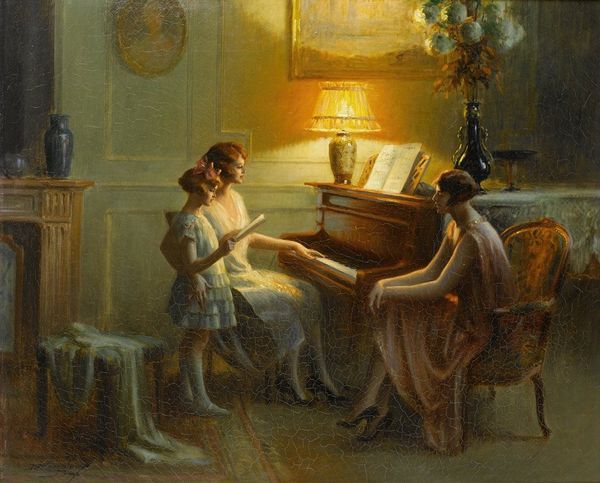
painting, oil-paint
#
portrait
#
figurative
#
painting
#
oil-paint
#
figuration
#
intimism
#
genre-painting
#
rococo
Copyright: Public Domain: Artvee
Curator: "In the reading room." Look at the soft luminescence. How would you describe your first impression? Editor: The light feels constructed rather than naturally present. Each character is framed by distinct pools of radiance as though lit by different acts within a theater piece. It is quite dreamlike. Curator: Delphin Enjolras painted intimate domestic scenes, particularly women in interiors, recalling the Rococo emphasis on leisurely moments. Here, we witness a serene snapshot; oil paint renders women relaxing amid their reading. Observe how they are adorned in fashionable loungewear, immersed in study and introspection. It appears as a refuge removed from a bustling public realm. Editor: Rococo yes. I agree. Yet beyond that I notice how he builds mood almost entirely with gradations in shadow and tone. It lends the painting an air of gentle mystery. It suggests things about femininity and intellect, all implied by a sophisticated use of color relationships. The bright crimson of the sitter on the left provides dramatic weight, in contrast to her contemplative pose. What else stands out for you in the symbolics, especially given this rococo association? Curator: Rococo had similar settings to this one. However, instead of aristocracy, the painting highlights new feminine ideals in a time of transition; quiet observation can subvert older ideals of propriety. Those lamps, though seemingly normal, feel like sentinels that demarcate areas where knowledge is quietly sought and ideas considered and questioned. Editor: Yes, this resonates: the painting shows the intellectual evolution, the quiet rebellion inherent within domestic privacy. The room itself is staged deliberately. Note the arrangement of statuary on the mantle, almost pagan in implication, above where one of the characters sits. They seem like markers along an intellectual and spiritual pathway, subtly defiant in its very peacefulness. Curator: Seeing these spaces anew, and their occupants, does challenge narratives. I am especially attuned to how spaces impact historical memory as related to feminine intellect. Editor: This detailed analysis demonstrates why studying visual construction is essential for truly understanding an image’s legacy. These quiet stories, these private illuminations, remain, even if not written plainly.
Comments
No comments
Be the first to comment and join the conversation on the ultimate creative platform.
